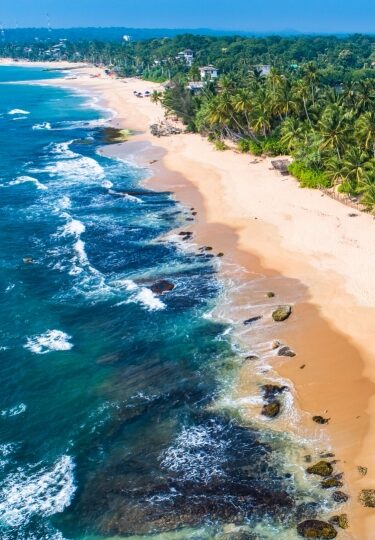The tropical island of Sri Lanka, shaped like a teardrop and lying in the Indian Ocean, is encircled with a necklace of golden sandy beaches. Slender coconut palms arch over pristine sands, while turtles make their way up the shores to lay their eggs, and blue whales cruise offshore. To many, this is as close to paradise as you’ll get.
But Sri Lanka is more than beaches. Close to the shore, you’ll find Hindu temples in brilliant colors, European colonial architecture, and wildlife reserves where you can spot birds and monkeys. There are caves, jungly mountains, lush tea plantations, and mangrove lagoons to explore.
So make the most of the glorious beaches – but use your time to see more of this fascinating island, too.
Here are 10 of the best Sri Lanka beaches to try.
Goyambokka Beach, near Tangalle
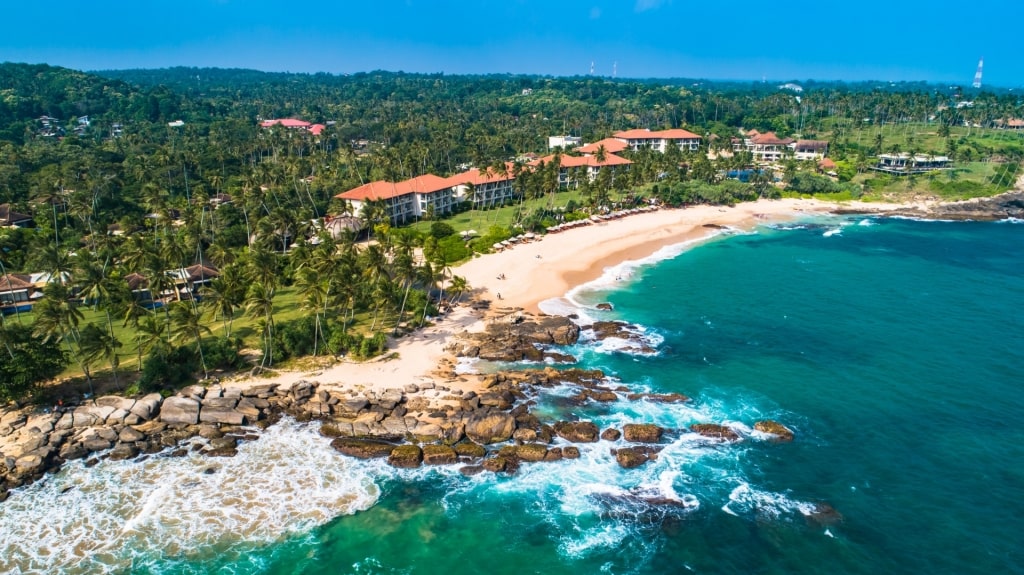
Goyambokka Beach, near Tangalle
One hour’s drive west of Hambantota, Goyambokka, or Sriyanga Sanjeewa, is a laid-back stretch of creamy sand set against a backdrop of dense greenery.
You’ll find a few shacks here selling drinks and snacks, and a gently rolling swell that means the beach is usually safe for swimming and snorkeling.
Visitors love Goyambokka for its relaxed, unstructured feel, and the fact that there’s plenty of shade under the palm trees. Just watch out for falling coconuts.
Tangalle Beach, near Hambantota
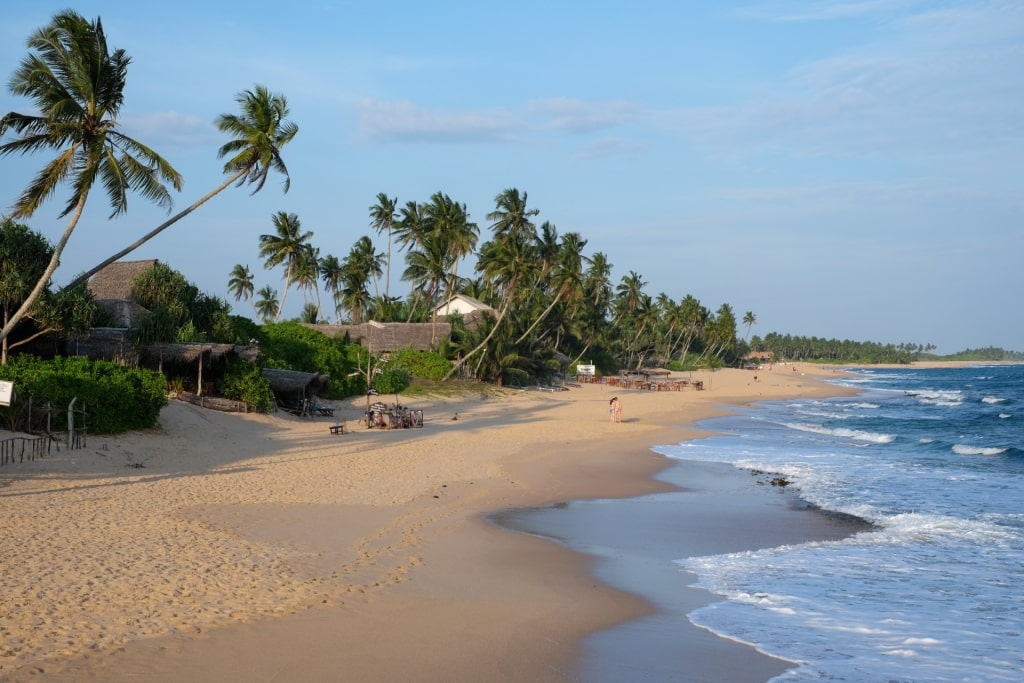
Tangalle Beach, near Hambantota
Pristine Tangalle Beach, located in Sri Lanka’s Southern Province, 40 minutes from Hambantota, is one of the island’s most blissfully undeveloped stretches of sand. Pounded by surf, it also offers calmer places for swimming in a string of small, rocky coves.
This beach is one of the most important sea turtle nesting sites on the island and, as such, is not over-commercial. You’ll find a few guesthouses and villas, and toes-in-the-sand beach shacks for lunch.
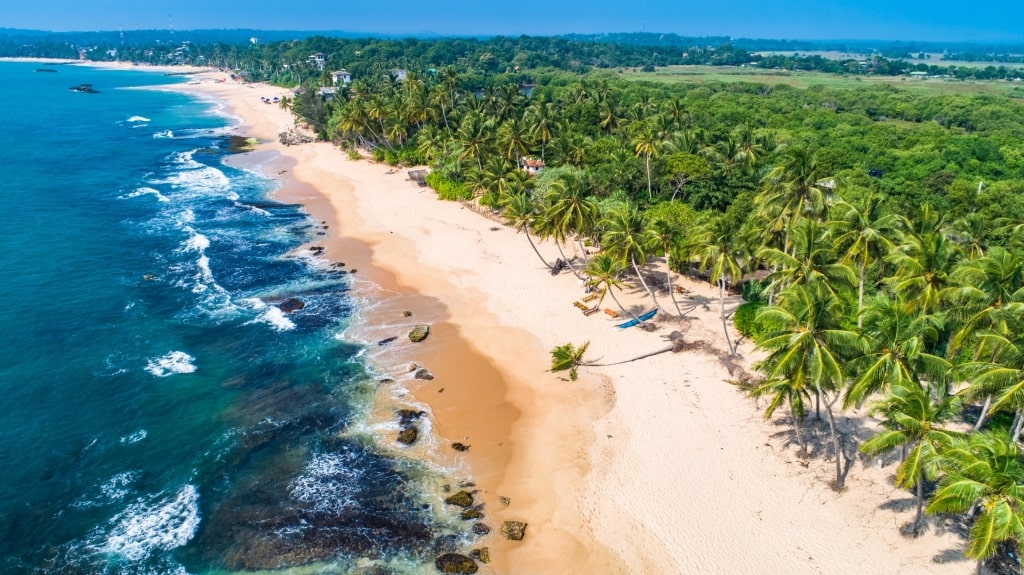
Tangalle Beach
There’s plenty to see around the busy town of Tangalle when you want a break from the tropical sunshine.
Check out the Hoo-maniya Blowhole, a natural rock chimney through which seawater is forced into a 50-foot jet when conditions are right. Head inland to see the rock temples at Mulkirigala, carved into an outcrop 673 feet high.
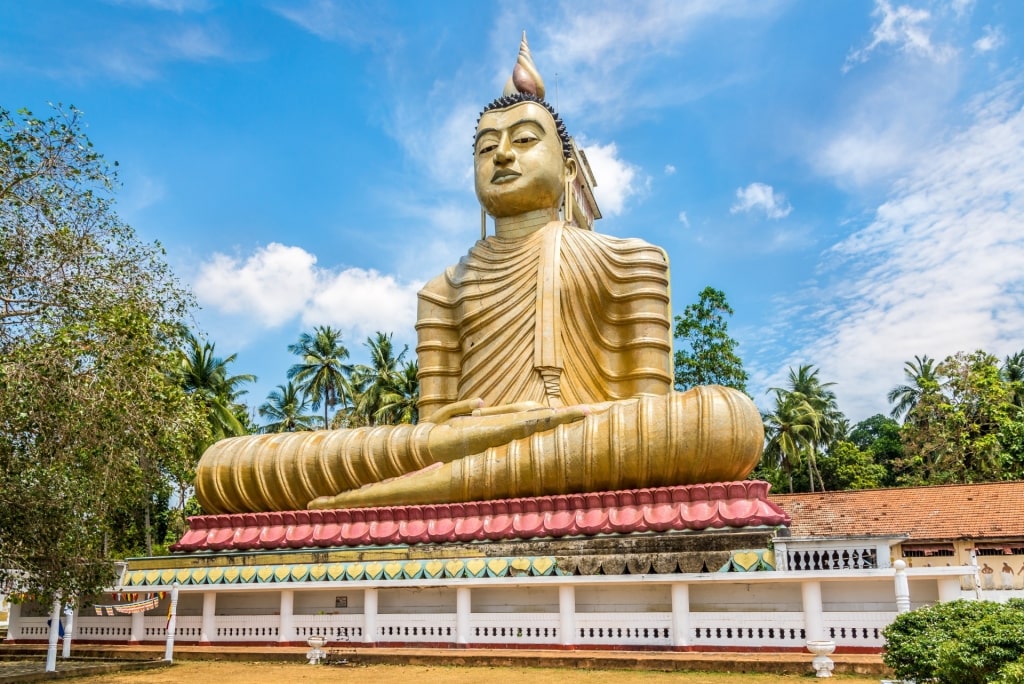
Wewurukannala
At Wewurukannala, you’ll find a giant Buddha, the largest in Sri Lanka. Keen birders can visit the Kalametiya Bird Sanctuary, where 150 species of wetland birds have been recorded. You might also see gray mongoose and the Hanuman langur, a large, furry monkey named after Hanuman, the Hindu god of healing and worship.
Rekawa Beach, Tangalle
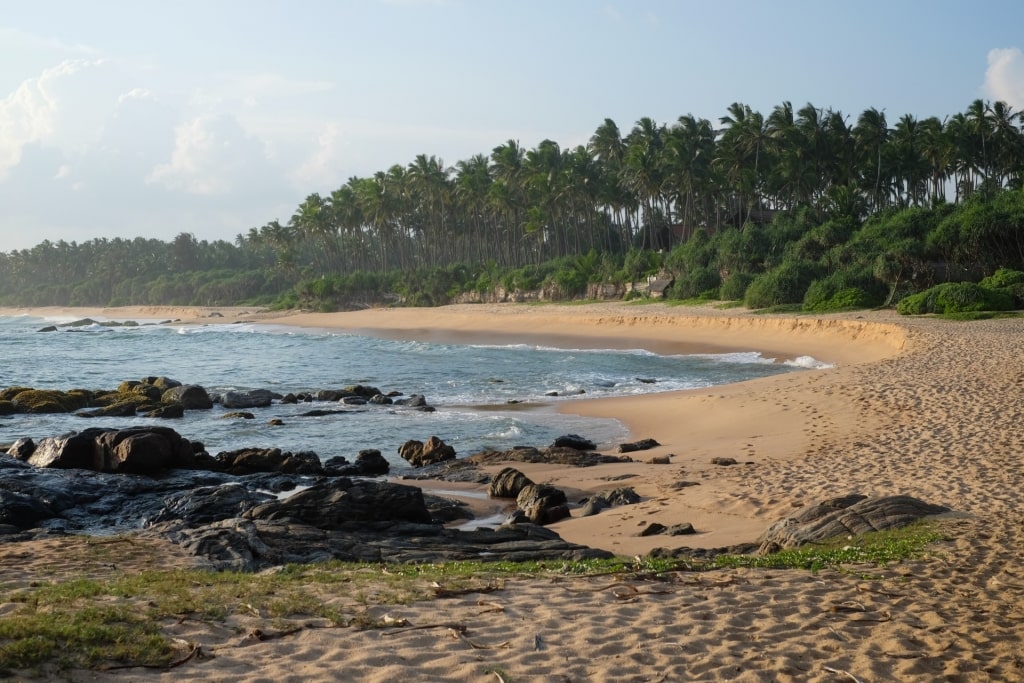
Rekawa Beach, Tangalle
More than two miles of golden sand, backed by swaying palms and dense, green shrubbery, Rekawa, to the east of Tangalle, is completely undeveloped. Why? Because this is prime sea turtle country.
Hawksbill, leatherback, green, and Olive Ridley turtles emerge from the pounding surf here, shuffling up the beach to lay their eggs and bury them in the warm sand. You’ll see turtle hatcheries here, designed to protect the nests and the miniature baby turtles which are guided by the light of the moon to the water as soon as they hatch.
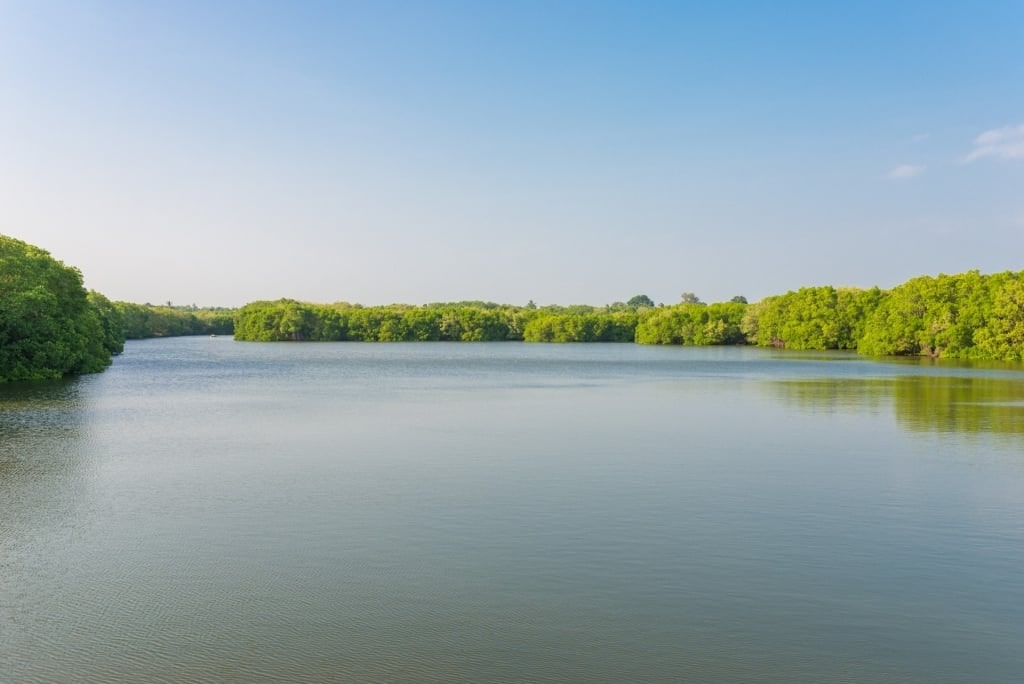
Rekawa Lagoon, Tangalle
Rekawa is actually a sandbar, with the ocean on one side and a tranquil lagoon on the other. While it’s not the best place to swim, as the surf is often rough, it’s a wonderful place to come for a stroll, a cooling paddle, and time to commune with nature.
Mirissa Beach, near Hambantota
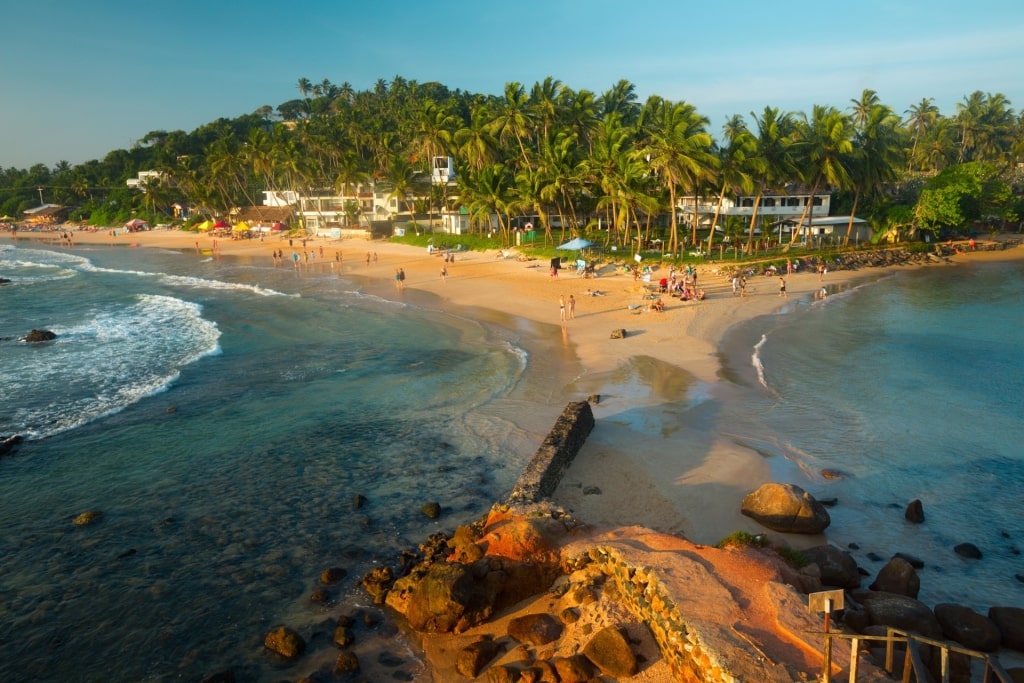
Mirissa Beach, near Hambantota
Spotting a blue whale, the world’s largest mammal, is an almost spiritual experience. Mirissa Beach, 90 minutes’ drive from Hambantota, is regarded as one of the best beaches in Sri Lanka for doing just that.
You will easily find a boat to take you out between December and April, when the marine mammals migrate through the Indian Ocean, feeding as they go on krill.
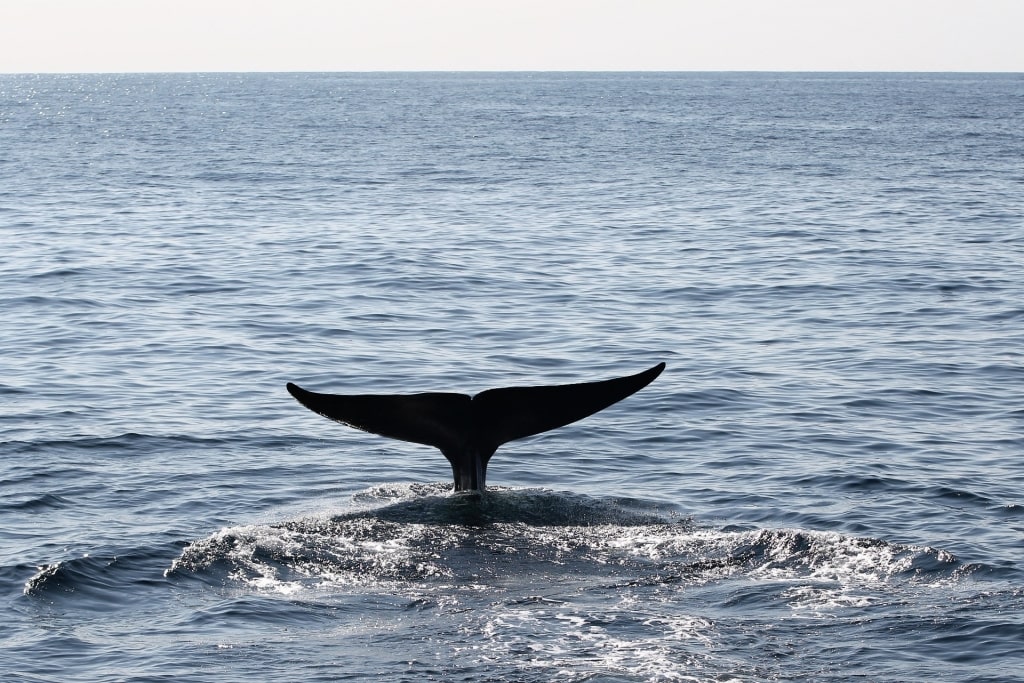
Whale
You could be lucky enough to spot a blue whale, up to 100 feet long, or other species, including sperm whales and humpbacks.
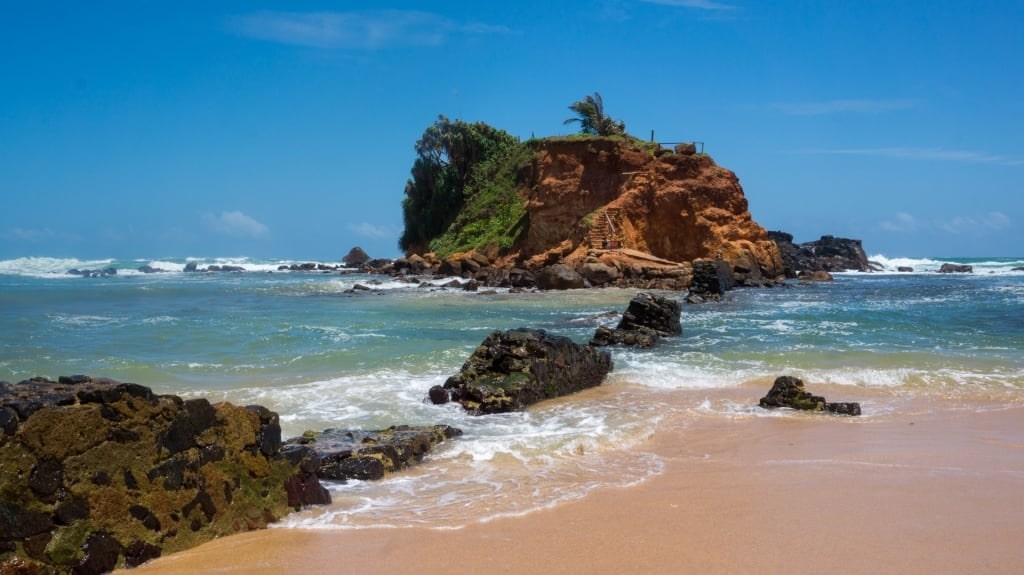
Parrot Rock, near Hambantota
Back ashore, you’ll find a half-moon-shaped bay of soft sand, with plenty of activities. Head out beyond the Parrot Rock outcrop for snorkeling, or rent a surfboard and hit the western reef break. It’s safe to swim in the clear, usually calm water.
There are more than enough places to head for a chilled beer and a lunchtime curry; Mirissa is fairly developed.
Hiriketiya Beach, near Hambantota
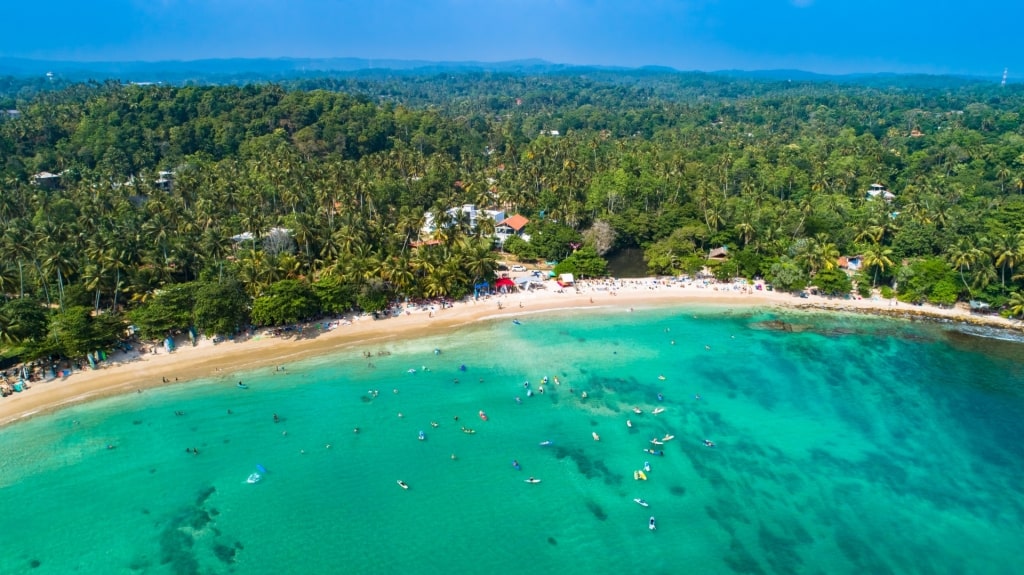
Hiriketiya Beach, near Hambantota
There’s an almost spiritual magnetism about Hiriketiya Beach, a perfect horseshoe of white sand guarded by wooded hills on either side, an hour or so west of Hambantota.
Artists, sculptors, musicians, and writers have been drawn here in search of a slice of paradise and a laid-back life in the sun, giving rise to a creative expatriate community.
You can surf and swim at Hiriketiya year-round, snooze in the shade of the coconut palms, gossip in cool coffee shops, browse rustic galleries, or join a yoga class. Hiriketiya is so seductive that, like many who have been here before, you may never want to leave.
Wellawatte Beach, Colombo
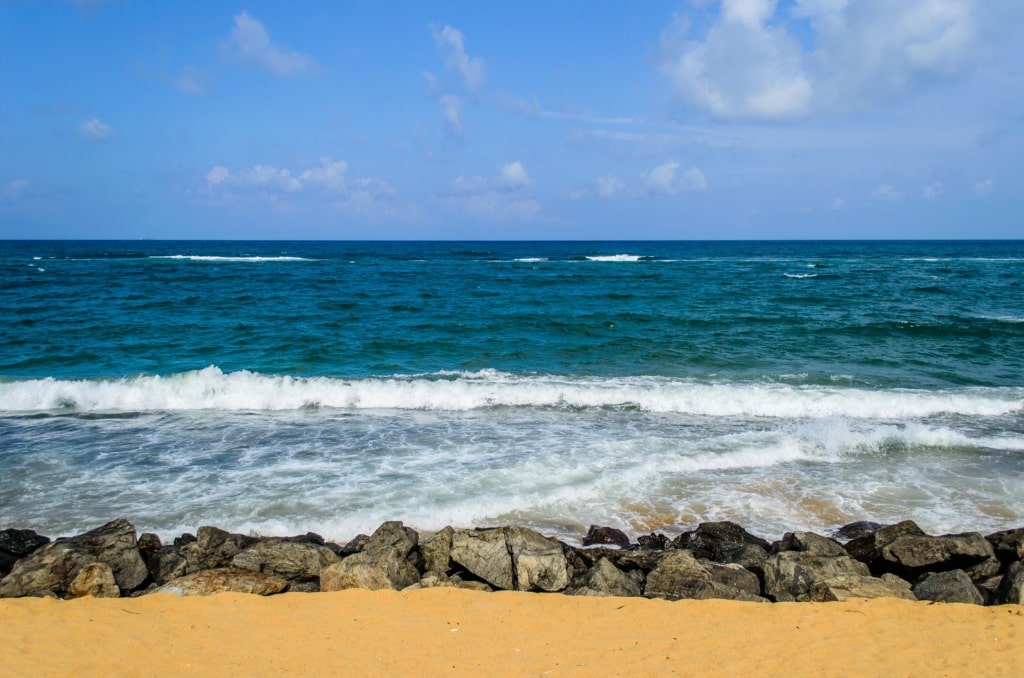
Wellawatte Beach, Colombo
Colombo itself isn’t blessed with the same blissful beaches as the far south of the island, but this doesn’t stop the locals from heading for the shore to fly kites, stroll, snack on street food, and go fishing.
The urban beach of Wellawatte offers all of these, the skyscrapers of the modern city on the northern horizon, and colorful fishing boats pulled up on the sand.
The railroad track runs parallel to the beach, which makes for interesting viewing as heavily laden trains rumble past—you actually have to cross the tracks to reach the sand, so be careful. You probably wouldn’t come here to swim, but at sunset, it’s Colombo life in microcosm and a great place for an evening promenade.
Galle Face Beach, Colombo
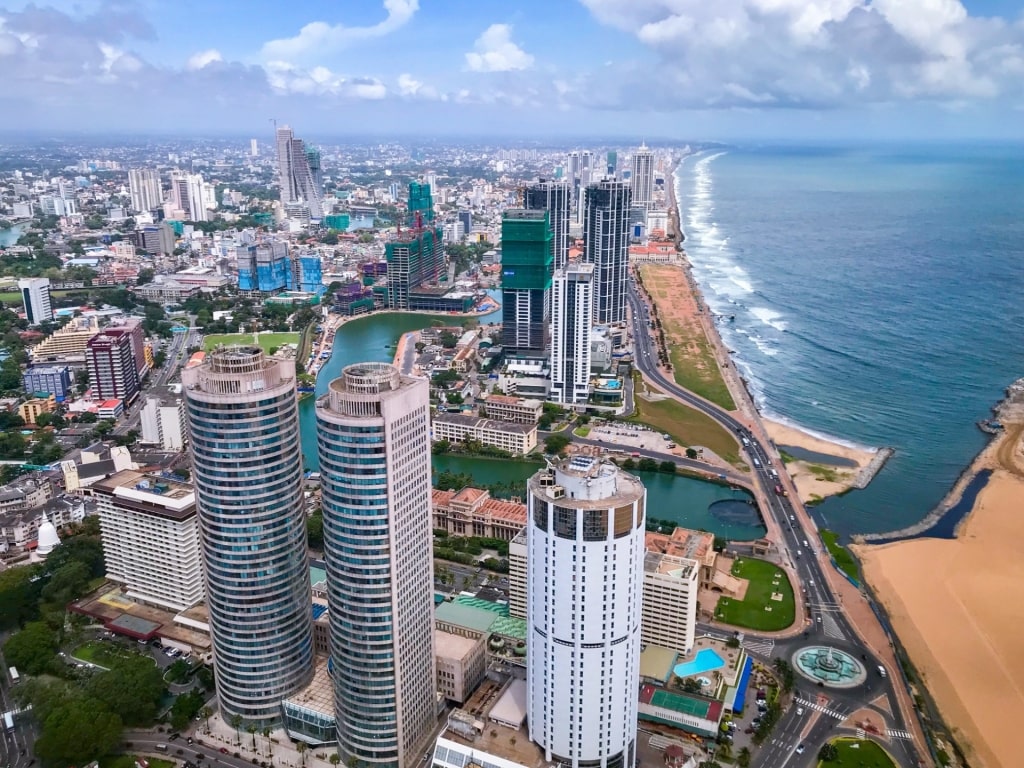
Galle Face Beach, Colombo
One of the best things to do in Colombo is to visit Galle Face Green, a waterfront park where locals come to play cricket, fly kites, picnic, and stroll. The Green is bordered by the long promenade separating the grassy area from the narrow strip of Galle Face Beach.
The promenade was built by Sir Henry Ward in 1859, when Sri Lanka was known as British Ceylon, and the Green was actually used for horse racing and called Colpetty Race Course.
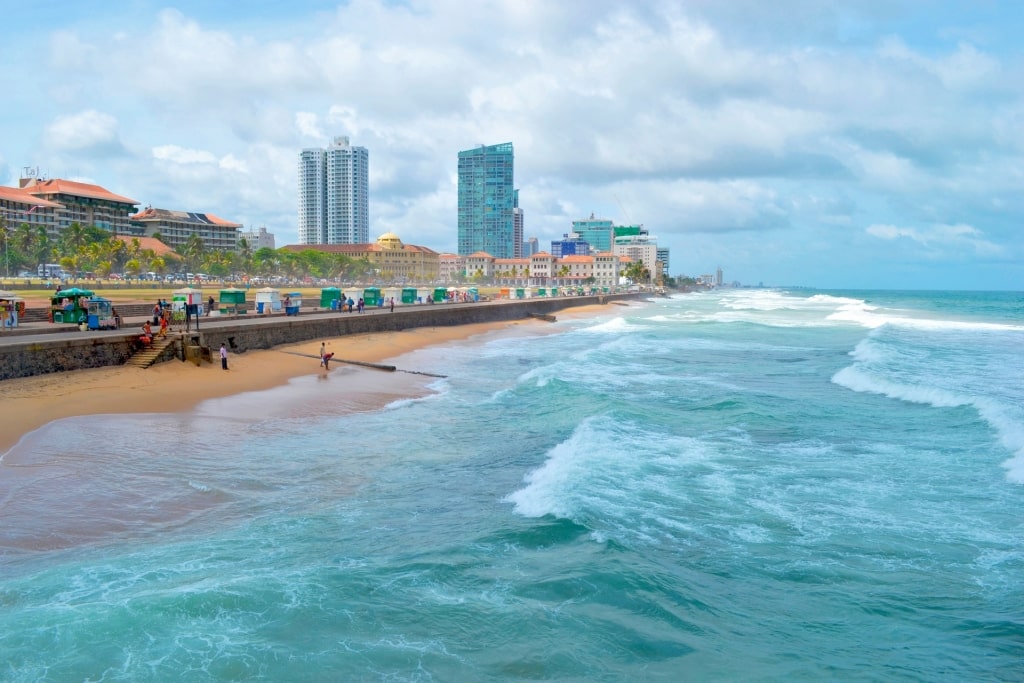
Galle Face Beach, Colombo
There’s little shade here during the day, and the water isn’t the most alluring for swimming, but it’s a popular spot to visit late afternoon for a stroll, general socializing, kite-flying (a real passion here), and watching the sun sink in a ball of fire into the Indian Ocean.
Hawker stalls offer snacks from the sea. Try isso wade, a local specialty of crispy, split pea pancakes with whole giant shrimp pressed on top, served with chili, garbanzo beans, curry leaves, and sauteed onions.
Negombo Beach, near Colombo
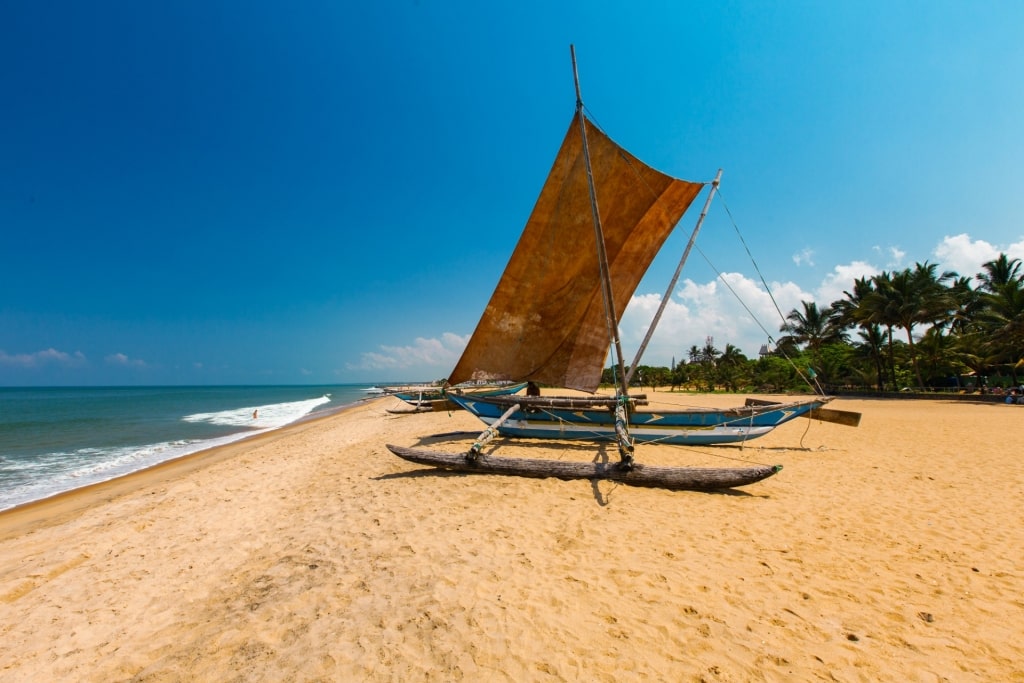
Negombo Beach, near Colombo
Negombo is a lively beach resort about an hour’s drive north of Colombo, at the northern tip of a wide lagoon.
It’s one of the finest beaches near the city for swimming, snorkeling, kite surfing, and fishing, and has blossomed from a humble fishing village into a sophisticated resort. Souvenir shops, bars and restaurants serving authentic Sri Lankan food line the shore, and the beach is a wide swathe of golden sand.
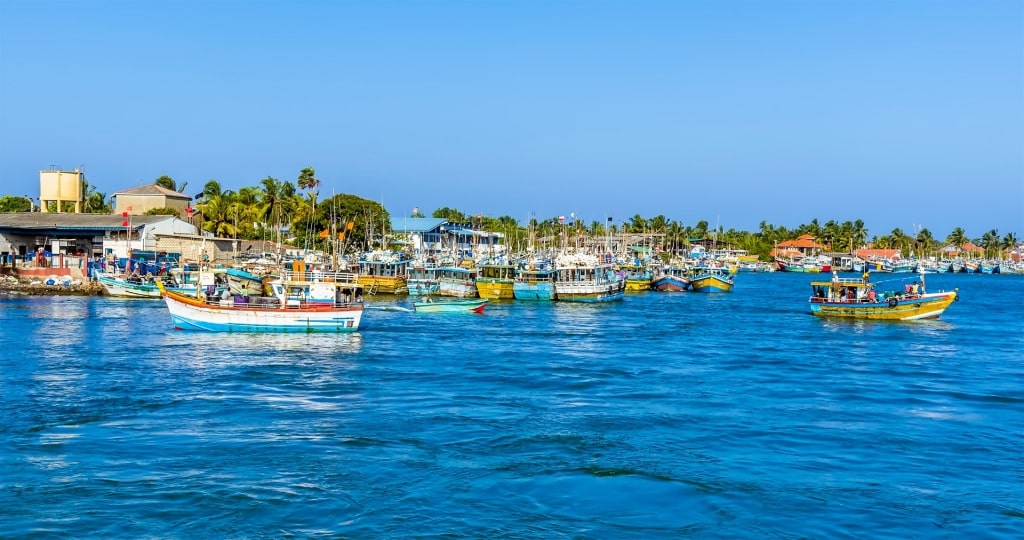
Negombo
There’s plenty to see away from the beach, too. Negombo, one of the best beaches in Asia, is famed for its fish market, so take time to visit and marvel at the bounty of the Indian Ocean.
You’ll find both Portuguese and Dutch churches around the town, along the Dutch-built canal, a nine-mile waterway that’s a legacy of the times when each nation used Negombo as a trading port, their interest primarily in the cinnamon that grows in Sri Lanka.
Look out for the old Dutch Fort gate, too, which dates back to 1672 and has a classic Dutch gabled roof.
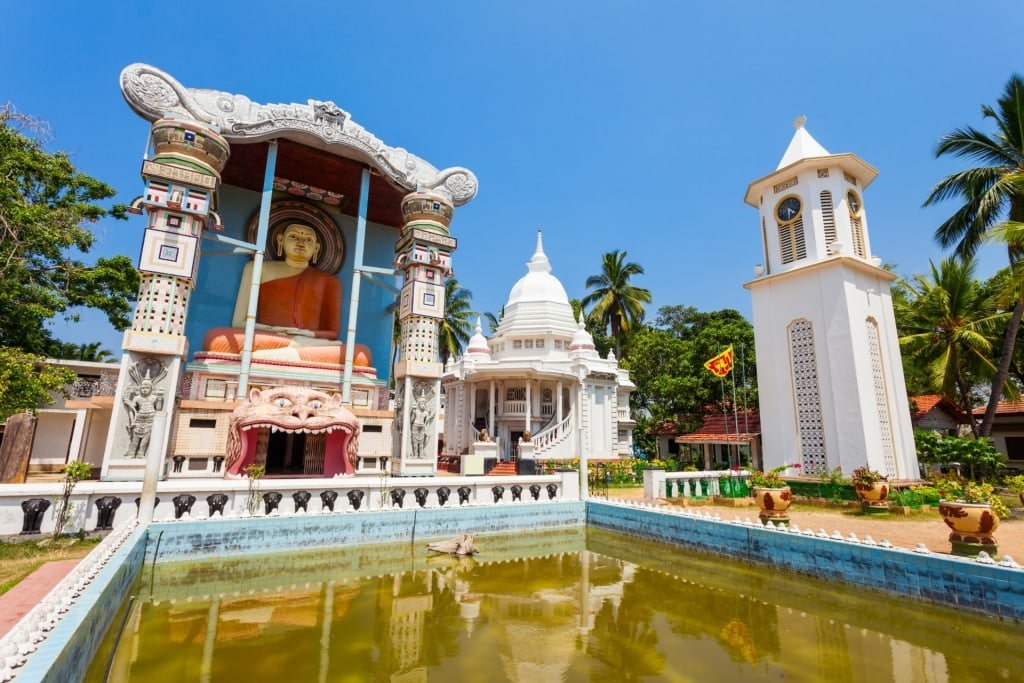
Angurukaramulla Temple
Also worth seeing is the brightly colored Angurukaramulla Temple, which contains a vast image of Buddha and some impressive murals.
The population here is actually almost entirely Roman Catholic, not Buddhist, so the neoclassical St. Mary’s Church (Mahaweediya Palliya in Sinhala), an impressive cathedral, plays an important role in the community.
Peek inside to see the exquisite paintings on the ceiling, actually created by a local Buddhist artist.
Bentota Beach, near Colombo
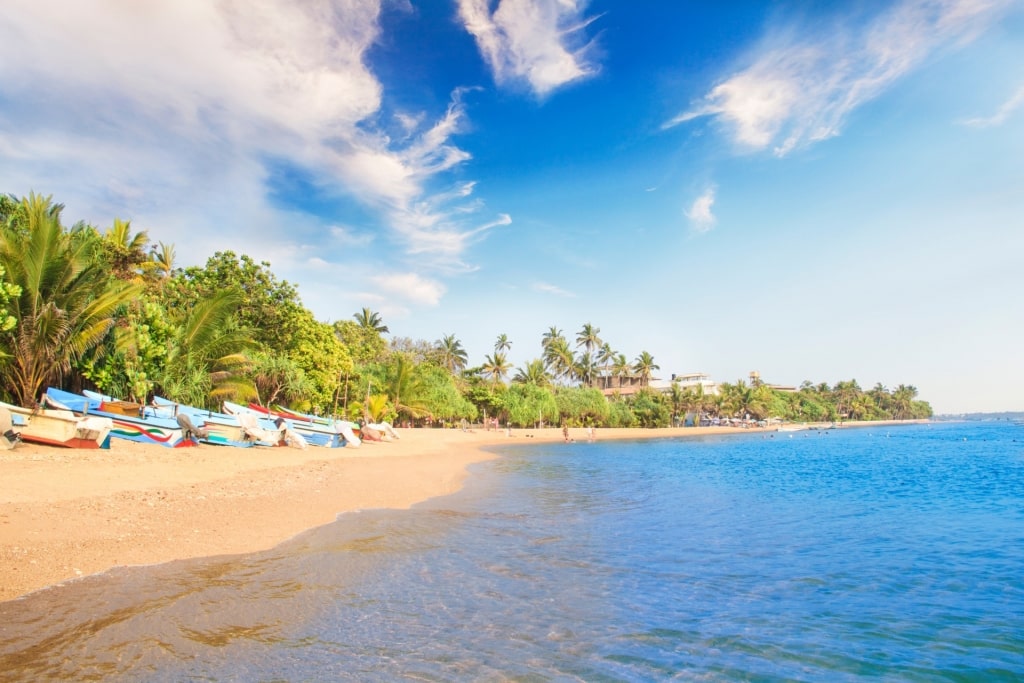
Bentota Beach, near Colombo
With its sparkling blue waters, gently sloping sands, and swaying palms, Bentota Beach, 40 miles south of Colombo, is set on a long spit of sand.
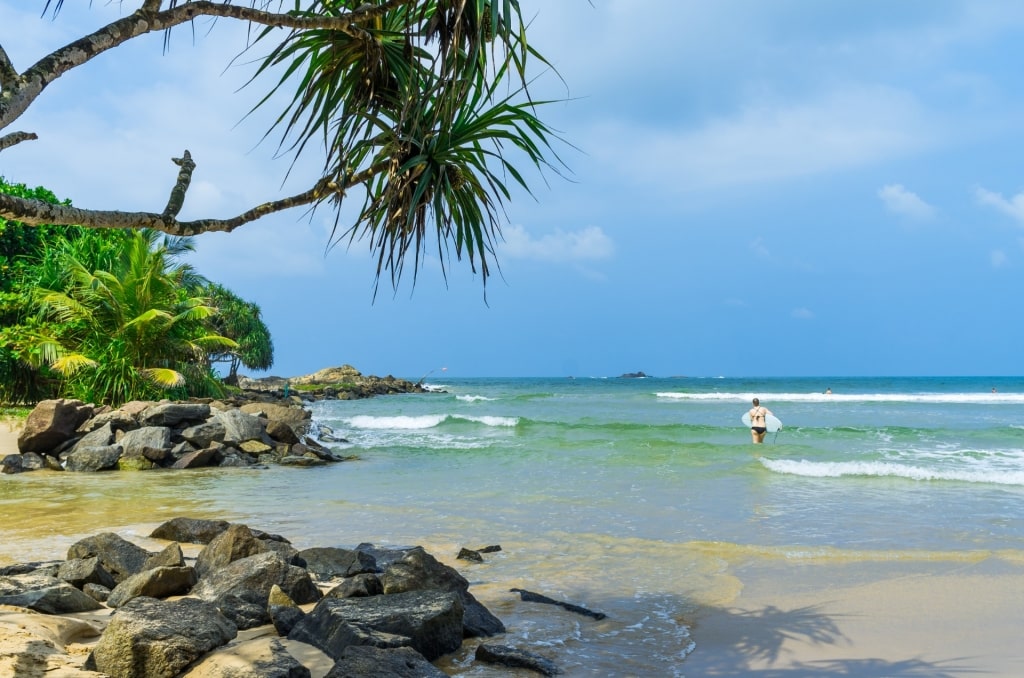
Bentota Beach, near Colombo
Unsurprisingly, this is a top choice for honeymooners in Sri Lanka and one of the best Sri Lanka beaches if you’re looking for activities and shopping. It’s also known as Ventura Beach.
The beach lies south of the estuary of the Bentara River, which flows into the Indian Ocean here and has created a calm lagoon behind the sand spit. There are endless opportunities for watersports, from snorkeling to diving, windsurfing, fishing, and powered sports such as jet skiing and water-skiing on the lagoon.
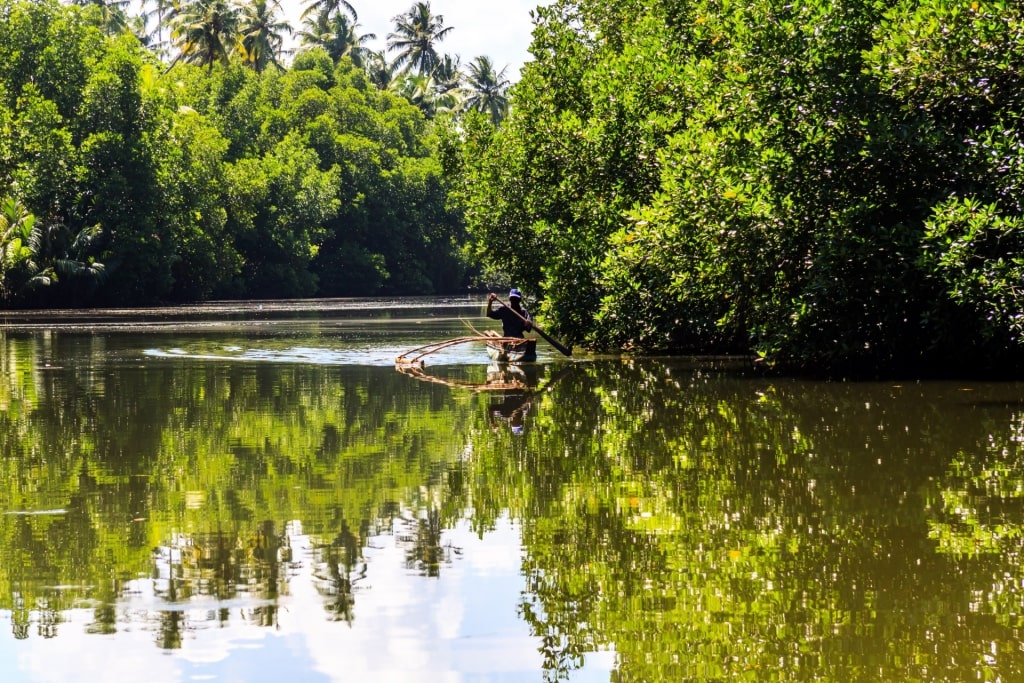
Bentota River, near Colombo
For a more peaceful activity, take a kayak tour of the mangroves, paddling sun-dappled channels of green on the lookout for birds in the trees and sea turtles popping their heads up.
Numerous beach concessions provide equipment if you haven’t brought your own. One of the most popular dive sites is Canoe Rock, a 20-minute boat ride from the beach. The reefs here are dazzling, with corals in every shade of the rainbow, and dozens of species of tropical fish.
Away from the water, there’s great souvenir shopping in Bentota, from batiks to carved masks, packs of Ceylon tea, herbs and spices, and gemstones.
Mount Lavinia Beach, Colombo
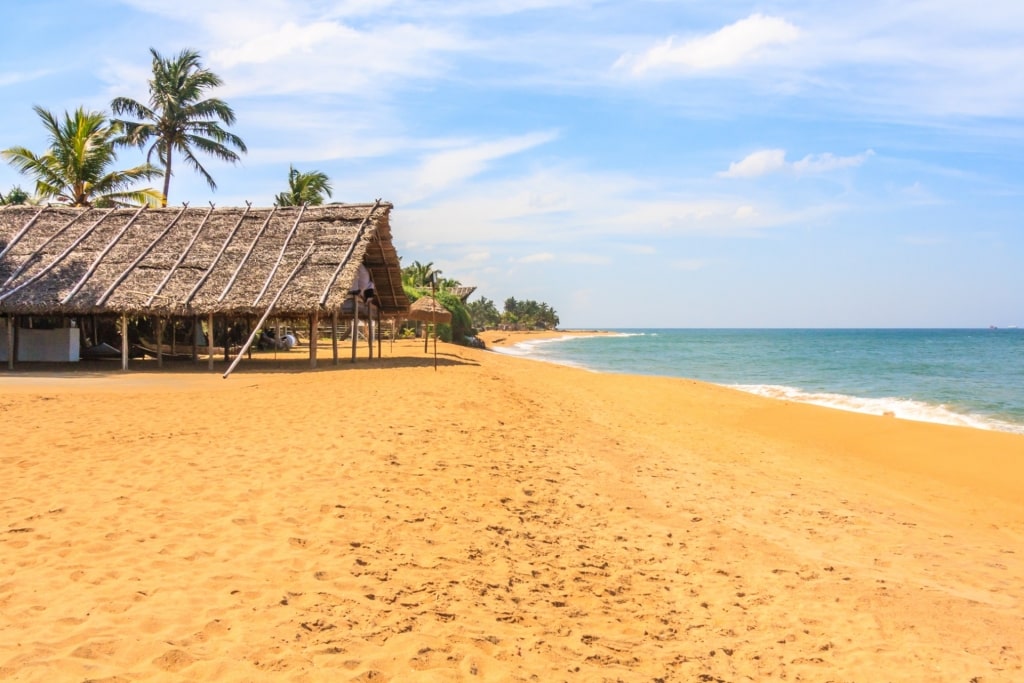
Mount Lavinia Beach, Colombo
Mount Lavinia, an upscale suburb of Colombo immediately south of the city, is one of the capital’s more appealing urban beaches.
It’s not always ideal for swimming as the waves are often too strong, but is nonetheless a popular spot where city dwellers come to play on the sand, stroll, build sandcastles, and watch the glorious sunsets for which the west coast of Sri Lanka is known.
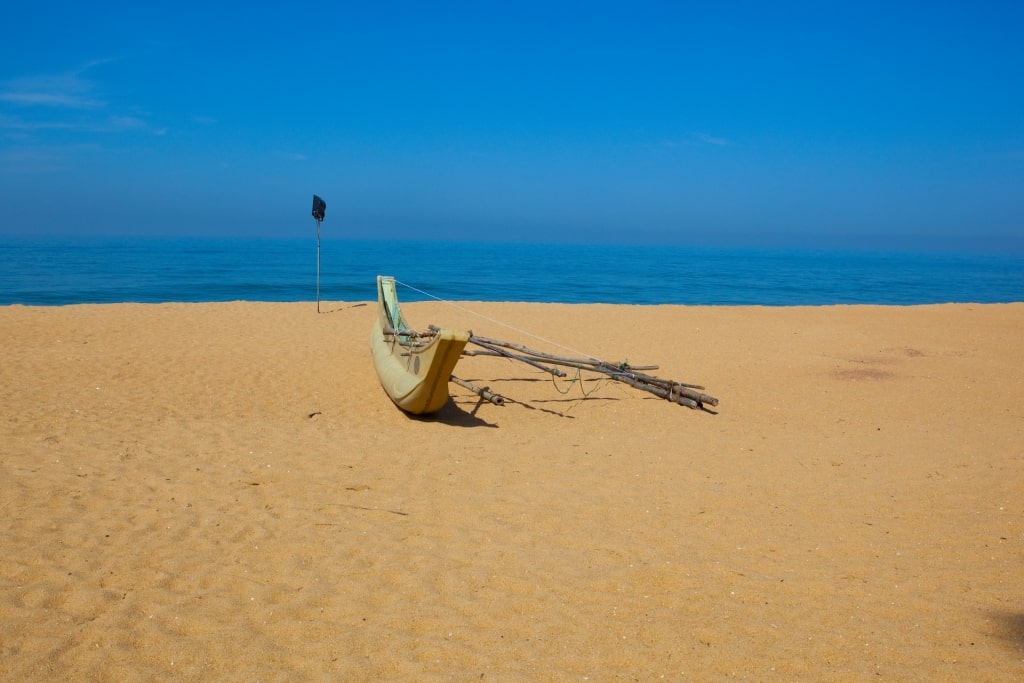
Mount Lavinia Beach, Colombo
While you’re here, make time for afternoon tea at the posh, colonial-style Mount Lavinia Hotel, a Colombo institution since 1806, perched on a promontory overlooking the ocean and emanating old-world elegance.
The hotel was once the residence of the British governors and the Governor’s High Tea is a mouth-watering spread of dainty sandwiches, scones still warm from the oven, pretty cakes, and tempting pastries. All this is washed down with the finest Ceylon teas.
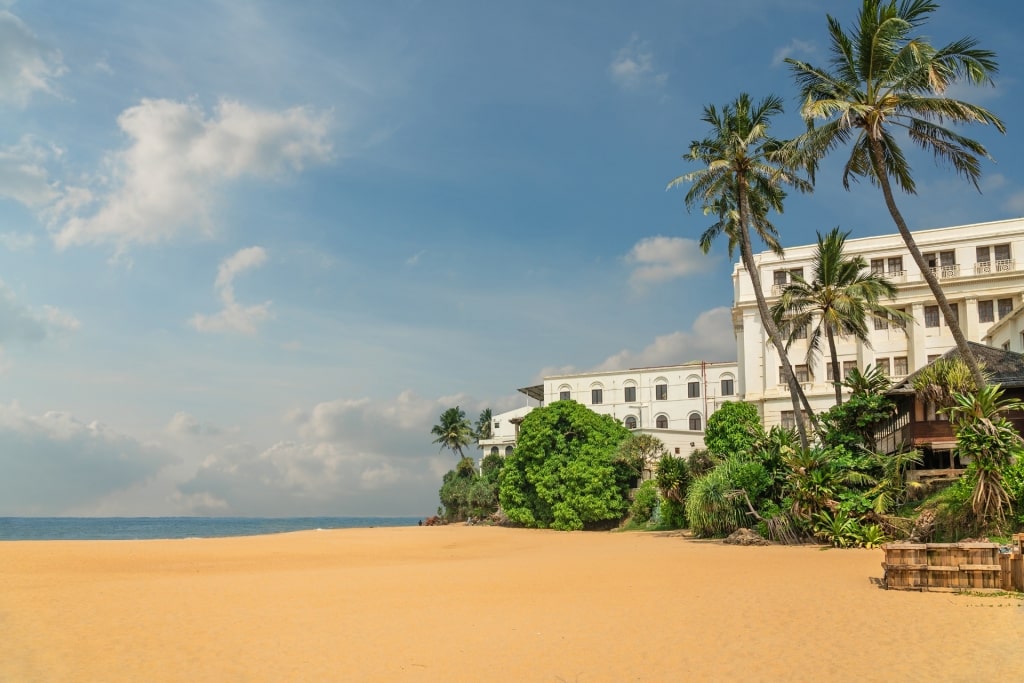
Mount Lavinia Hotel, Colombo
Mount Lavinia is a Colombo institution, and you can learn about the history of the building and its poignant love story.
Sir Thomas Maitland, governor-general of what was then Ceylon between 1805 and 1811, fell in love with a local gypsy dancer, Lovina, and went to considerable effort to see her, despite the fact that the romance was considered socially unacceptable.
There’s actually a secret tunnel from the wine cellar in the governor’s mansion to a well on what was the property of Lovina’s father.
The romance was tragically doomed, and Maitland moved on to the Mediterranean island of Malta in 1811. He never married. But his Ceylon home was named Mount Lavinia House, in a slight corruption of the dancer’s name. Today, there’s a statue of Lovina in a fountain at the entrance to the hotel.
If you’re not too full following afternoon tea, stroll on the sand, breathe in the sea air, snack on street food, or watch the sunset with an ice-cold beer.
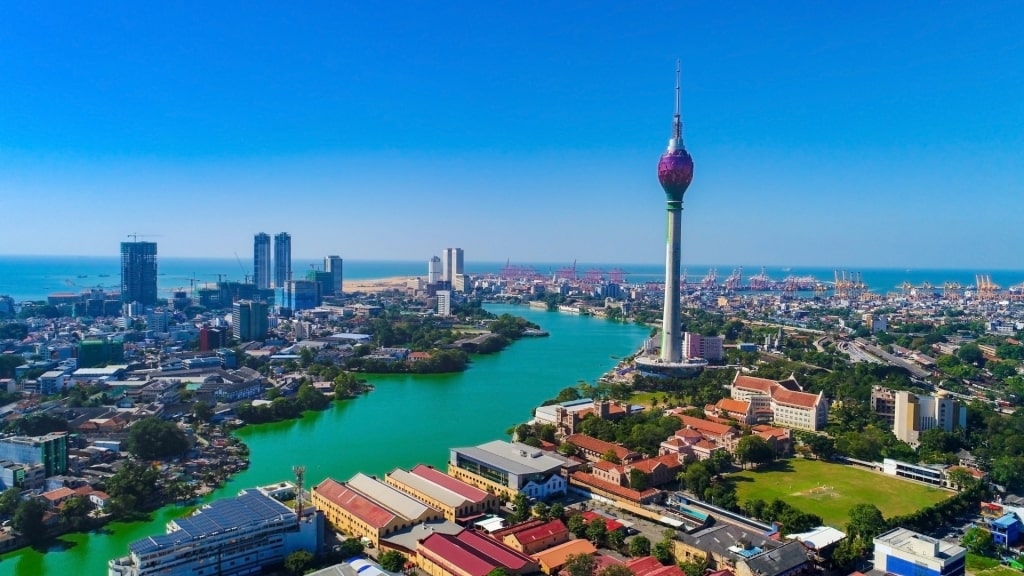
Sri Lanka
Tempted to learn more about Sri Lanka’s dreamy beaches and tropical charms? Browse Celebrity’s cruises to Sri Lanka and plan your exotic escape.
